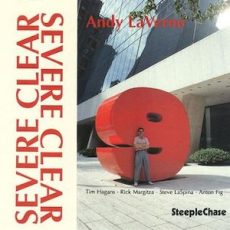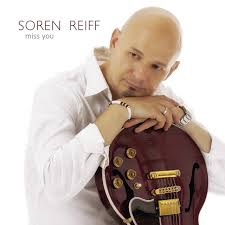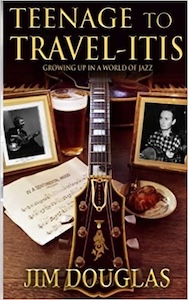
Daily Dose Of Jazz…
Andy LaVerne was born on December 4, 1947 in New York City, and studied at Juilliard School of Music, Berklee College, and the New England Conservatory. He also took private lessons from jazz pianist Bill Evans.
LaVerne has worked with Frank Sinatra, Stan Getz, Woody Herman, Dizzy Gillespie, Chick Corea, Lionel Hampton, Michael Brecker and Elvin Jones. As a leader he has recorded more than 50 albums including a duo with saxophonist Jerry Bergonzi.
An educator, Andy has released a series of instructional videos, Guide to Modern Jazz Piano, Vols. 1 &, 2, and Jazz Piano Standards, and In Concert with guitarist John Abercrombie.
He has authored several books that has included his own compositions as well as the Handbook of Chord Substitutions, Tons of Runs, Bill Evans Compositions 19 Solo Piano Arrangements, and is the pianist on The Chick Corea Play-Along Collection. He is a frequent contributor to several jazz, music and piano publications.
Besides receiving being a recipient of several fellowships and awards, holding numerous clinics, masterclasses and performances worldwide, pianist Andy LaVerne currently is Professor of Jazz Piano at The Hartt School on the campus of the University of Hartford in Connecticut and on the faculty of the Aebersold Summer Jazz Workshops.
More Posts: author,educator,history,instrumental,jazz,music,piano

Daily Dose Of Jazz…
Søren Reiff born October 22, 1962, in Holbæk, Denmark to painter Tove Reiff and potter Erik Reiff. When he was ten years old he went to an Eric Clapton concert which sealed his fate to become a guitarist. A few years later he was invited to a recording session and that cemented his career choice.
In the mid-Eighties was the guitarist in house bands and as musical director on Danish National television, which led him to play with Toots Thielemans, Randy Crawford, Robert Palmer, Bonnie Tyler and others. The Nineties saw Reiff working as musical director for Chaka Khan, David Sanborn, Mark King, and many others on these television shows.
As an author Søren has published five books, released three albums as a recording artist. He has played on several American television shows, Studiojams and co-hosted the show The Color of Jazz. He was the founder of Den Rytmiske Højskole’s course for Songwriters and Producers.
Guitarist, producer, composer and author Søren Reiff, who was included in the International Who’s Who in Music, Volume Two, Popular Music, continues to perform and record.
More Posts: author,composer,guitar,history,instrumental,jazz,music,producer

Daily Dose Of Jazz…
Jack Payne was born John Wesley Vivian Payne on August 22, 1899 in Leamington Spa, Warwickshire, England. He is the only son of a music publisher’s warehouse manager and it wasn’t until he was serving in the Royal Flying Corps that he played the piano in amateur dance bands. Towards the end of World War I, he led dance bands for the troops and was part of a voluntary group The Allies Concert Party that performed to wounded soldiers convalescing around Birmingham.
He played with visiting American jazz bands at the Birmingham Palais during the early 1920s, including the Southern Rag-a-Jazz Orchestra in 1922, before moving to London in 1925. He played in a ten-piece band which became the house band at London’s Hotel Cecil. Three years later Payne became the BBC Director of Dance Music and the leader of the BBC’s first official dance band.
After leaving the BBC in 1932 he returned to playing hotel venues and switched labels to Imperial, followed by Rex from 1934. Payne took his band on nationwide tours and made a couple of films, composed and published waltzes, and recorded jazz working with Garland Wilson.
>Returning to the post of Director of Dance Music at the BBC until 1946. Bandleader and composer Jack Payne, who authored two autobiographies, died in Tonbridge, Kent, England on December 4,1969, aged 70.
More Posts: author,bandleader,composer,history,instrumental,jazz,music

Daily Dose Of Jazz…
Neil Richard Ardley was born in Wallington, Surrey, England on May 26, 1937. He attended Wallington County Grammar School and at the age of thirteen started learning the piano and later the saxophone. He studied chemistry at Bristol University, also playing both piano and saxophone in jazz groups, graduating in 1959 with a BSc.
Moving to London, England the next year he studied arranging and composing with Ray Premru and Bill Russo. He joined the John Williams Big Band as pianist, arranger and composer, and from 1964 to 1970 was the director of the New Jazz Orchestra. The band employed some of the best young musicians in London, including Ian Carr, Jon Hiseman, Barbara Thompson, Dave Gelly, Mike Gibbs, Don Rendell, and Trevor Tomkins.
The late 1960s saw Ardley begin composing, combining classical and jazz methods. The New Jazz Orchestra 1969 album Le Déjeuner sur l’Herbe is considered a classic of British jazz. It includes arrangements of Nardis by Miles Davis and Naima by John Coltrane, and compositions by young writers associated with the orchestra – including Ardley, Michael Garrick, Mike Gibbs, Howard Riley and Mike Taylor.
His rich orchestrations were augmented in the 1970s by the addition of synthesisers. He began work on an all-electronic album in 1980 which fell through when his recording contract was suddenly terminated, but continued to play and compose, especially with Zyklus, the electronic jazz group he formed with composer John L. Walters, Warren Greveson and Ian Carr.
Neil went on to sing in local choirs in the later 1990s led him to start composing choral music, and to gig and record again with a slimmed down Zyklus consisting of himself, Warren Greaveson, and Nick Robinson
Composer and pianist Neil Ardley, who was an author of popular books on music, died in Bakewell, Derbyshire, England on February 23, 2004.
More Posts: author,composer,history,instrumental,jazz,music,piano

Daily Dose Of Jazz…
Jim Douglas was born Robert James Elliot Douglas on May 13, 1942 in Gifford, East Lothian, Scotland. He played drums in his youth before switching to guitar and in his teens he accompanied clarinettist Pete Kerr.
As part of a Dixieland band, he performed in Germany in 1960 and soon after Jim began playing with Alex Welsh. In 1971 he appeared on the album Freddy Randall and His Famous Jazz Band. Other than Kerr and Welsh, he worked with Alan Elsdon, Lennie Hastings, Ed Polcer, and Keith Smith.
Douglas wrote and self-published a semi-autobiographical book, Tunes, Tours and Travel-itis – Eighteen Years of Facts, Faces and Fun with the Alex Welsh Band. He followed this up three years later with Teenage to Travel-itis – Growing Up in a World of Jazz. The sequel chronicles his adventures in the Jazz world before and after his time with the Alex Welsh Band.
Guitarist, banjoist, and author Jim Douglas, who played with Red Allen, Earl Hines, and Ruby Braff from 1962 until 1981 while in the Welsh band, continues to perform.
More Posts: author,bandleader,banjo,guitar,history,instrumental,jazz,music




